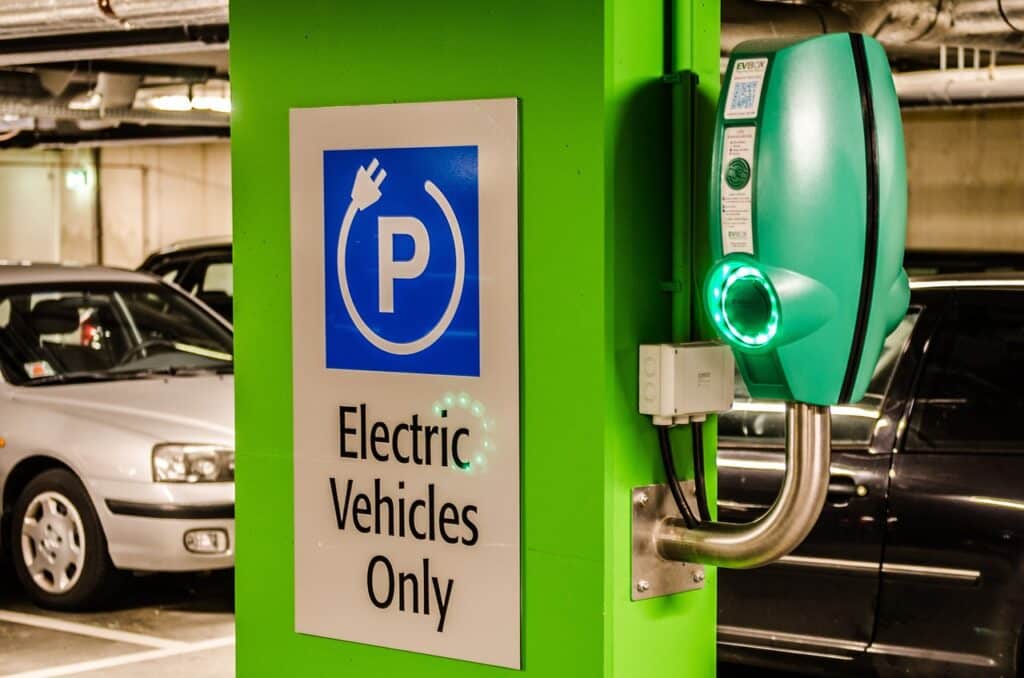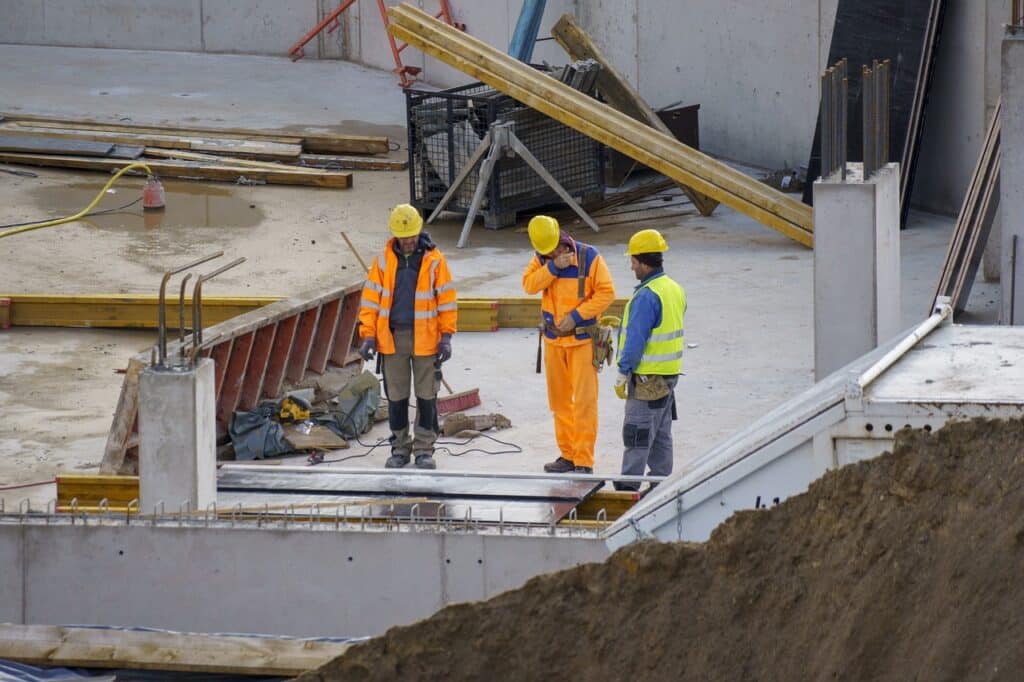IRA Shows Tremendous Progress at Second Anniversary
This week commemorates the second anniversary of the Biden/Harris administration enacting the Inflation Reduction Act, (IRA) a historic piece of legislation that stands as the most significant effort ever undertaken to combat climate change, both in the United States and globally. It represented a pivotal moment for all those committed to tackling this generational challenge.
To bolster electric vehicle (EV) adoption in the US, the IRA included:
New Clean Vehicle Tax Credit (Section 30D)
Used Clean Vehicle Tax Credit (Section 25E)
Commercial Clean Vehicle Tax Credit (Section 45W)
Clean Heavy-Duty Vehicles
Alternative Fuel Vehicle Refueling Property Tax Credit (Section 30C)
Electrifying the USPS Fleet
However, despite its groundbreaking achievements, the Inflation Reduction Act carries a significant weakness: it was passed strictly along party lines. This partisan foundation leaves it vulnerable to political opposition and possible repeal attempts in future congressional sessions.
Political leaders who opposed the IRA’s passage are now trying to ensure its survival, as their states have benefitted greatly from the historic legislation. Economic booms from the many clean energy projects including wind, solar, batteries, electric vehicles (EVs), and energy storage projects have created vast numbers of new, good clean energy jobs in those states and others.
Earlier this month, eighteen Republican House members sent a letter to House Speaker Mike Johnson (R-La.), urging him to “prioritize business and market certainty” when considering any efforts to repeal or reform the Inflation Reduction Act (IRA). The signatories, including Reps. Mariannette Miller-Meeks (R-Iowa), Nick LaLota (R-N.Y.), Mike Lawler (R-N.Y.), and Anthony D’Esposito (R-N.Y.), expressed concerns they’ve heard from both industry leaders and constituents. They noted fears that the energy tax landscape could be destabilized by Republican efforts to dismantle the IRA.

An analysis by Climate Power reveals that in the two years since the Inflation Reduction Act (IRA) was enacted, it has led to the creation of at least 334,565 new clean energy jobs and spurred over $372 billion in green energy investments across 47 states. Interestingly, the IRA has been particularly beneficial to regions represented by Republican lawmakers.
The study found that “a bulk of the new clean energy projects are located in congressional districts represented by Republican members of the House of Representatives,” accounting for 190,727 new jobs and over $286 billion in investments across 354 clean energy projects in 150 Republican-held districts. A separate analysis by Politico echoed this, noting that “roughly two-thirds of the major projects are in districts whose Republican lawmakers opposed the Inflation Reduction Act.”
Clean Energy Will Cut Costs for Consumers
The strong adoption of the Inflation Reduction Act’s (IRA) clean energy credits is proving to be a win-win, benefiting both the environment and reducing Americans’ fuel and utility costs. The rapid expansion of the nation’s clean energy initiatives is pivotal to achieving the U.S. goal of reducing climate pollution to half of its peak levels by 2030. Economists project that this will lead to significant consumer savings, including up to $220 annually per household on electricity bills, while also driving $178 billion in clean energy and transportation investments in the first three quarters of 2023.
According to the latest estimates from the Congressional Budget Office (CBO) and the Joint Committee on Taxation (JCT), the cost of the IRA’s climate provisions is approximately $730 billion. This figure does not include costs associated with an Environmental Protection Agency (EPA) emissions rule, as it is a separate policy introduced by the Biden administration in April 2023. Despite this, even when considering the costs of the vehicle emissions standards rule, the IRA is still projected to pay for itself over the next decade, according to The Center for American Progress, an independent, nonpartisan policy institute.

The IRA Worked, Delivering on Economic Growth and Jobs
The Inflation Reduction Act (IRA) has delivered on its promises. The IRA, structured around a series of tax credits and incentives, was specifically designed to catalyze private-sector investment in the fight against climate change by fostering the development and deployment of clean energy technologies and infrastructure across the United States.
The core intent of the IRA was to link climate action with U.S. economic growth and industrial policy, a strategy that directly aligns with several bipartisan priorities. This integration has not only accelerated the clean energy transition but also bolstered economic development across the nation.
The jobs being generated nationwide through the Inflation Reduction Act (IRA) are providing well-paying opportunities for a wide range of workers, including electricians, mechanics, construction workers, technicians, and support staff, among others. Clean energy jobs are known for offering higher wages and solid benefits. Research from the Brookings Institution indicates that securing a job in the clean energy sector can lead to an income increase of eight to 19 percent.
Moreover, 75% of the new jobs created by the clean energy plan do not require a four-year degree, making them accessible to a broad spectrum of Americans. This accessibility ensures that the economic benefits of the IRA extend to a diverse and inclusive workforce, contributing to the nation’s overall prosperity while advancing clean energy goals.

Thousands of Companies, Nearly a Third of the S&P 100, Supported the Inflation Reduction Act
The widespread support from thousands of companies, spanning various industries and states, was a crucial factor in the passage of the Inflation Reduction Act’s (IRA) climate investments. Notably, nearly a third of S&P 100 companies backed the legislation. These companies recognized that addressing climate change would not only spur job creation and economic growth but also reduce energy and transportation costs. Furthermore, they understood that mitigating climate risks—such as heatwaves, droughts, floods, and extreme weather—would protect their facilities, supply chains, and infrastructure.
Since the IRA became law, businesses have played a vital role in its implementation, providing valuable input to ensure its success. They regularly meet with members of Congress from both parties to highlight the positive impact of the IRA as projects across the country begin to take shape. This ongoing collaboration between the private sector and lawmakers helps to ensure that the benefits of the IRA are fully realized, further solidifying its role in America’s clean energy transition.
Over 3.4 Million Families Have Claimed $8.4 Billion in Rebates for Energy Efficiency Improvements and Solar Installations
The Inflation Reduction Act (IRA) is a multifaceted law, encompassing industrial manufacturing, electrification, home energy retrofits, and the promotion of new energy technologies. It leverages tax credits to drive these initiatives forward while also offering incentive tax credits to foster the creation of good jobs and support workforce apprenticeships.
Some aspects of the IRA, such as the home energy rebates, are still in the early stages and haven’t been rolled out in most states. However, the impact of the IRA’s climate measures is already visible. For instance, over 3.4 million families have claimed $8.4 billion in rebates for energy efficiency improvements and solar installations.
The Inflation Reduction Act (IRA) and Bipartisan Infrastructure Law (BIL) Are Revitalizing the U.S. Energy System
The Biden/Harris administration’s landmark legislative achievements—the Inflation Reduction Act (IRA) and the Bipartisan Infrastructure Law (BIL)—are fundamentally transforming the U.S. energy landscape. These laws represent the most significant federal investments in clean energy, infrastructure, and climate resilience in American history, designed to strengthen the nation’s energy supply chains, create high-quality clean energy jobs, reduce greenhouse gas emissions, and deliver substantial energy savings to consumers.
A Department of Energy (DOE) report, titled “Investing in American Energy: Significant Impacts of the Inflation Reduction Act and Bipartisan Infrastructure Law on the U.S. Energy Economy and Emissions Reductions,” offers a comprehensive analysis of the projected outcomes of these initiatives. The analysis was conducted using OP-NEMS, a customized version of the National Energy Modeling System (NEMS), which provides detailed insights into how these laws are expected to reshape the U.S. energy system.
By the end of this decade, the Biden/Harris “Investing in America” agenda, supported by the Inflation Reduction Act (IRA) and the Bipartisan Infrastructure Law (BIL), is positioned to achieve the following:
- Revitalizing American Energy Supply Chains: The IRA and BIL are set to significantly strengthen domestic energy supply chains. This includes boosting the production of clean energy technologies like solar panels, wind turbines, and batteries within the United States.
- Creating Clean Energy Jobs: The agenda is expected to create millions of clean energy jobs across the country. These jobs will span various sectors, including manufacturing, construction, and technology development, particularly in renewable energy and energy efficiency industries.
- Reducing Greenhouse Gas Emissions: The combined impact of the IRA and BIL is anticipated to substantially reduce U.S. greenhouse gas emissions, putting the country on a path to meet its climate goals, reducing U.S. net greenhouse gas emissions 40% below 2005 levels by 2030. The DOE report indicates that these laws will accelerate the deployment of clean energy, reduce reliance on fossil fuels, and promote the adoption of electric vehicles. The laws will reduce industrial and manufacturing emissions up to 40% below 2005 levels.
- Saving Consumers Money on Energy: The policies are designed to lower energy costs for American consumers. By increasing energy efficiency, reducing the cost of renewable energy, and supporting the widespread adoption of electric vehicles, the agenda aims to make energy more affordable for households and businesses. The policies will save American families up to $38 billion on electricity bills.
- Modernizing Energy Infrastructure: Significant investments are being made in upgrading the nation’s energy infrastructure. This includes enhancing the electric grid with Vehicle-to-grid (V2G) and battery storage to accommodate more renewable energy, improving resilience against extreme weather events, and expanding access to clean energy in underserved communities.
- Driving Innovation in Clean Energy Technologies: The IRA and BIL will support research, development, and deployment of next-generation clean energy technologies. This includes advancements in energy storage, carbon capture, hydrogen energy, and other emerging technologies that are critical to achieving long-term climate goals.
- Strengthen U.S. Energy Security: these laws will decrease the nation’s reliance on foreign oil, thus enhancing energy independence and security. Projections include reducing net crude oil imports by nearly 60%.
- Promote EV Adoption: The IRA and BIL will accelerate the electrification of the American vehicle fleet, with share of zero-emission light-duty vehicle sales reaching up to 65%.
- Increase Electricity Generated by Clean Sources: The IRA and BIL’s acceleration of the transition to cleaner, domestic energy sources includes doubling the share of American electricity generated by clean sources to 80%.
Overall, these initiatives are expected to position the U.S. as a global leader in clean energy, drive economic growth, and significantly contribute to the fight against climate change. EVinfo.net asks you to join us in supporting this groundbreaking legislation.

Electric Vehicle Marketing Consultant, Writer and Editor. Publisher EVinfo.net.
Services